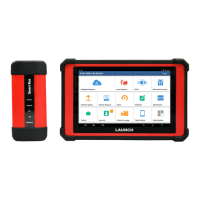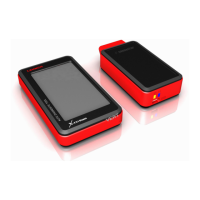: On-off
: Capacitance
: Resistance
: Diode
7.3 Detection Example
Knock sensor detection
(1)
Detect knock sensor resistance
Turn off the ignition switch, disconnect the knock sensor wire connector, and use
"resistance measurement " to detect the resistance between the knock
sensor wire terminal and the housing. The resistance should be ∞ (non-
conducting). If the resistance is 0Ω (conducting), the knock sensor must be
replaced. For the magnetostrictive knock sensor, "resistance measurement
" can also be used to detect the coil resistance. The resistance should
meet the specified value (for the specific data, see the service manual).
Otherwise, the knock sensor must be replaced.
(2)
Check knock sensor output signal
Remove the knock sensor plug. Use "voltage test" to check the voltage between
the knock sensor wire terminal and ground when the engine is idling. There
should be a pulse voltage output. If not, the knock sensor must be replaced.
Coolant temperature sensor detection
(1)
Detect coolant temperature sensor resistance
Check on the vehicle: Turn off the ignition switch, disconnect the coolant
temperature sensor wire connector, and use "resistance measurement "
to test the resistance between the two terminals of the sensor. Its resistance
value is inversely proportional to the temperature (negative temperature
coefficient) and should be less than 1kΩ during warm-up.
Single piece check: disconnect the coolant temperature sensor wire connector,
remove the sensor from the engine, place the sensor into the water in the beaker,
heat the water in the beaker, and use "resistance measurement " to test
the resistance between the two terminals of the sensor under different water

